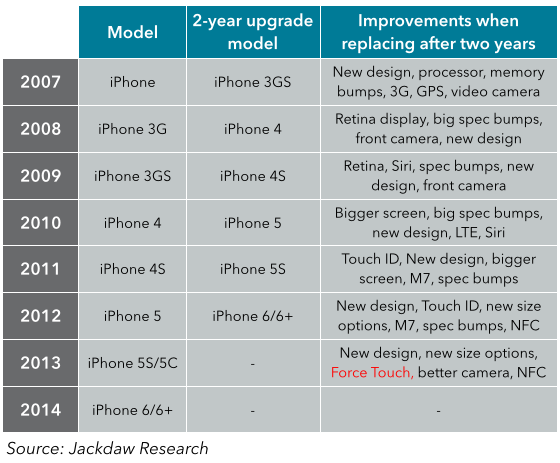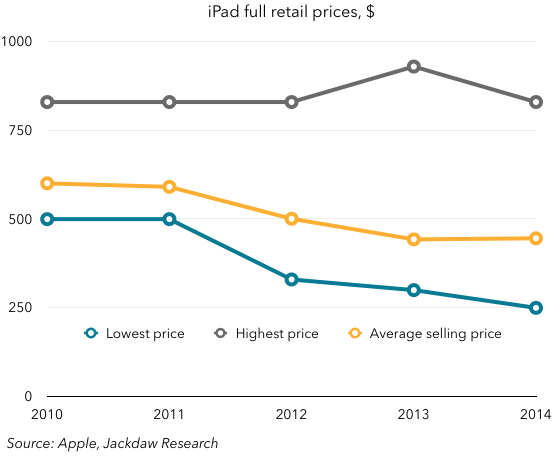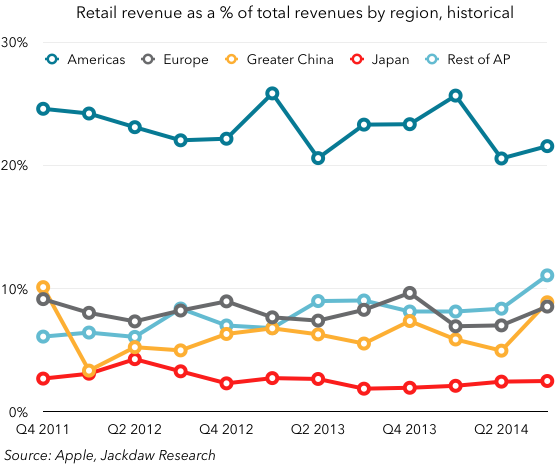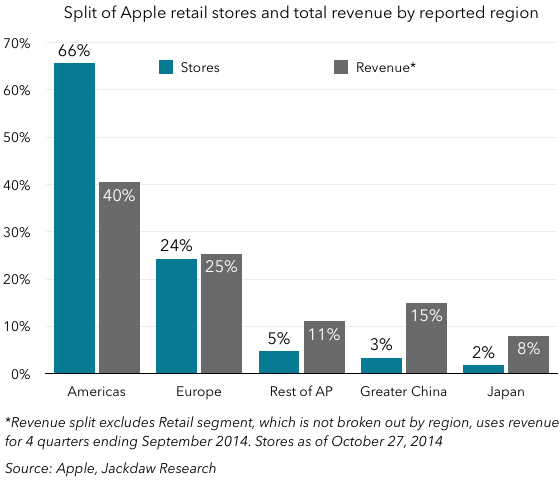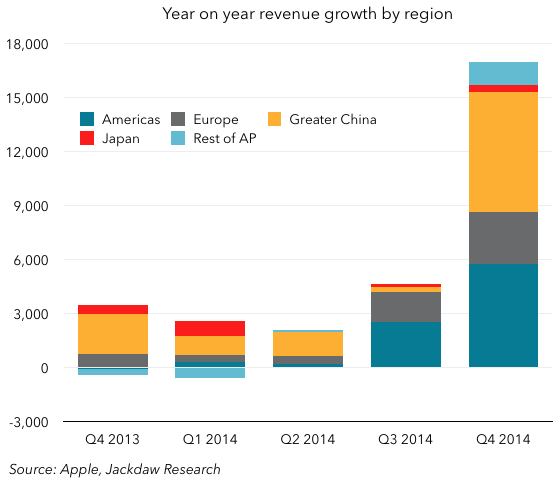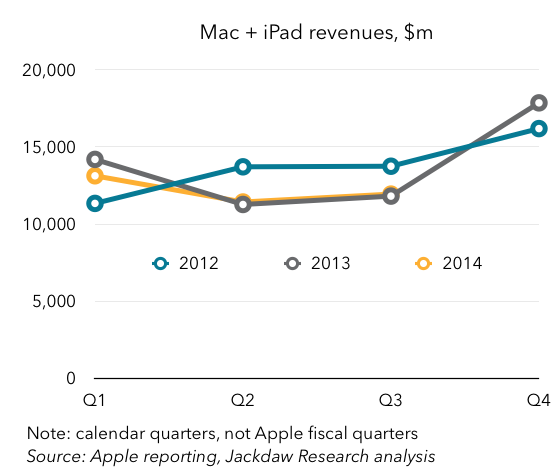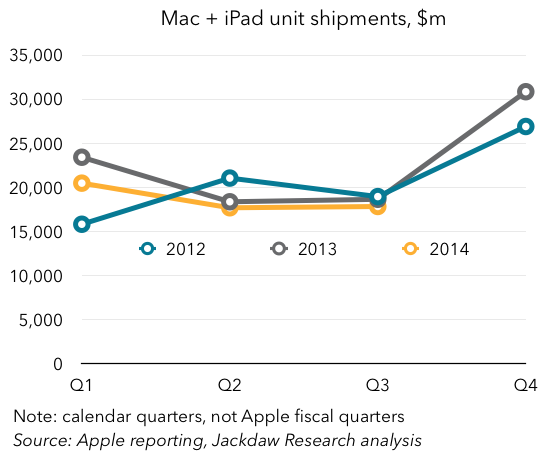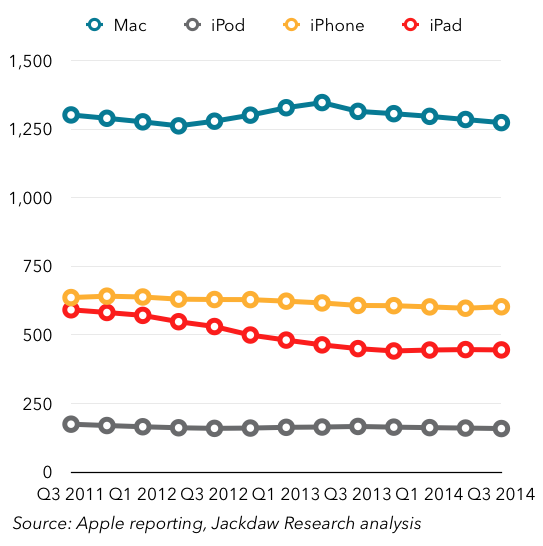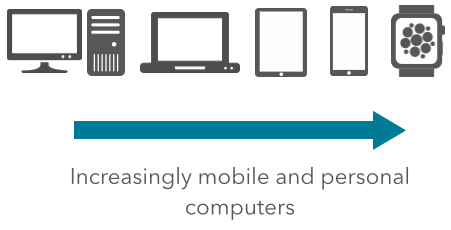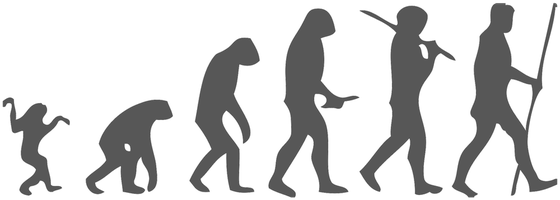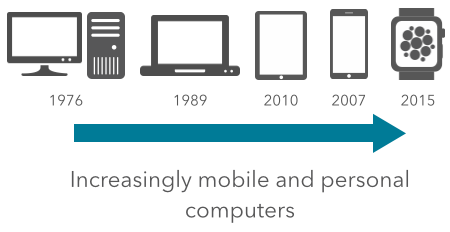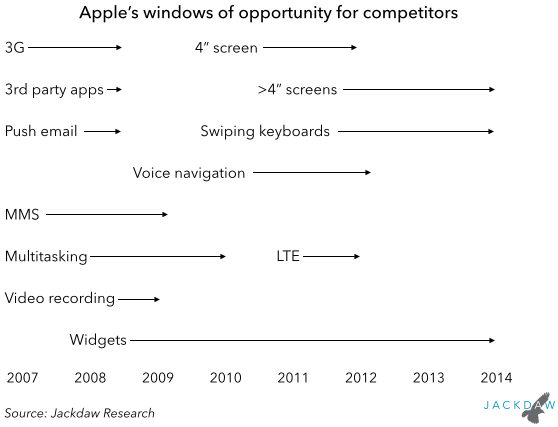Note: I’m cross-posting this piece from the Jackdaw Research website, where it went out earlier today as a media comment on Apple’s event. I should have more in-depth analysis on the event here and on Techpinions in the next few days. My preview piece from Tuesday is here.
Apple’s September event always sets the tone for its entire year – new iPhones are announced, and the iPhone makes up the majority of Apple’s revenue and profits, and the performance of the iPhone business largely determines overall growth rates, at least for now. But today’s event, like last year’s, added another new product category that should drive significant new revenue for Apple and for developers, and arguably the new Apple TV was one of the biggest and most important things announced today.
iPhone
The new iPhones have enough new features to make them an interesting upgrade for those who always have to have the latest device from Apple, with 3D Touch the biggest new feature. The name of Force Touch badly needed to change, since it always sounded a little like a form of assault. I’m no convinced 3D Touch is the right name, but it conveys the concept reasonably well, in that the functionality is about a more layered interaction. 3D Touch itself should make navigation and interaction much quicker and easier, but it will mean something of a learning curve for users, because there won’t be any visual cues indicating what a 3D Touch might do, a problem the Apple Watch suffers from as well. For anyone with a two-year old iPhone, which includes the vast majority of iPhone users who will upgrade in the next year, this will be a significant upgrade. For all the concerns about a down year for iPhones, I believe Apple will have another year of year on year growth, though likely significantly slower year on year than in the iPhone 6 cycle.
I’ve been saying since early last year that Apple should launch its own device installment plan for iPhones, and now it’s launching one, with the iPhone Upgrade Program. This is a huge opportunity for Apple to take control of the customer relationship away from the carriers, and that in turn is a big risk factor for carriers, which will now cede some of that relationship to Apple. Arguably, only Apple has the infrastructure in place to offer this kind of plan to customers, so this will also be a further differentiator against competitors.
Apple TV
The Apple TV has been described as a hobby at Apple for too long, and today the transition to a product worthy to sit alongside Apple’s other products begins. The new SDK will create a huge new opportunity for both existing and new developers, both in gaming and content, and in the process it’ll make the device more compelling for end users too. But what will really change the Apple TV is the launch of the Apple TV service a few months from now, because only then will the Apple TV be capable of becoming the only device you need to plug into your TV. In the meantime, Apple is going to bring casual gaming and a much broader range of apps to the platform, and especially for cord cutters, the Apple TV might well become the only device they need.
One interesting wrinkle is that Apple is giving developers less than two months to create apps for the Apple TV, which is by far the shortest time it’s ever given developers for a completely new SDK. The iPad, which leveraged what had been known as iPhone OS, gave developers 66 days, while the original iPhone gave them 127 days and the Apple Watch debuted 157 days after the SDK was released. That doesn’t give developers a lot of time, but it likely reflects the shared elements in tvOS compared with iOS on iPhones and iPads.
Apple Watch
Though a minor announcement at the event this week, Apple Watch OS 2 is going to be enormously important for the Apple Watch and for Apple. An Apple Watch running OS 2 is best thought of as the version of the Watch Apple would have wanted to launch right off the bat, if it could have. The first version of the Watch software was good, but the reality is that the apps are sorely lacking, in large part because of the heavy dependence on the iPhone for functionality. With Watch OS 2, that all changes, and apps should be snappier, more functional, and far more varied in their capabilities. I believe this new phase of its history will change the Watch as much as iPhone OS 2 changed the iPhone, and make it a much more compelling device, while creating big new opportunities for developers. The new watch and band options should also help diversify the appeal of the Apple Watch in both the premium and low-end segments, with both the Hermes watches and the new colors for the Sport option. This, coupled with the holiday season, should make for a really big calendar Q4 for Watch sales.
iPad
The iPad Pro has obvious similarities to Microsoft’s Surface, with its detachable keyboard and stylus. But the big difference is that the iPad is designed first and foremost as a standalone tablet, and the keyboard and stylus are optional extras. The Surface has always felt compromised as a pure tablet, because everything is geared around the use as a quasi-laptop. The Smart Keyboard and Pencil will add a lot of value for certain kinds of users, but the iPad Pro could easily be a replacement for a family PC for gaming or TV viewing. But with the keyboard, multi-tasking, and new apps and functionality from Microsoft and Adobe among others, it could also become a fairly compelling option in the enterprise. At a minimum of $1000 including the Keyboard and Pencil, the iPad won’t be all that price competitive against a basic PC, but with the new internals, it’s actually quite a powerful computer in its own right.
The key for the iPad is that Apple is now engaged in what you might call salami tactics here; in other words, Apple is seeking to add to the iPad opportunity incrementally with a number of smaller moves, and I see the iPad Pro in this context, along with Apple’s partnerships with IBM and Cisco. The iPad Pro by itself won’t dramatically change iPad sales, but should provide a good boost for sales, especially in conjunction with the advancements in multitasking and split-screen functionality in iOS 9. I’m still skeptical that iPad sales will start growing again over the longer term, but I think they might stabilize, and that will happen in large part due to increasing education and enterprise sales rather than renewed growth in the consumer market.
